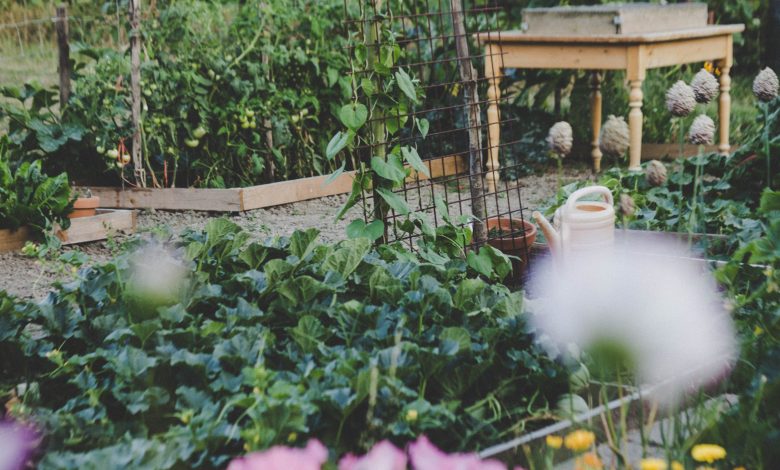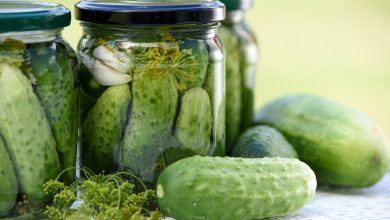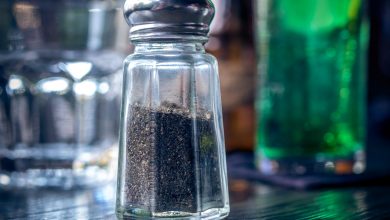How to Start a Garden

So you want to start a garden and don’t know where to begin? A great way to start gardening is deciding what you want to grow. Factors when deciding on what seed to buy may include what neighbors have in their gardens, foods you like to eat, what grows well in your area, and what you can realistically maintain.
The United States Department of Agriculture put together the Plant Hardiness Zone Map for gardeners in order to help determine which plants are most likely to thrive in their location. It utilizes annual minimum winter temperatures data and divides the country into zones. The map separates zones by the extreme low temps, which are meant to be used to compare to the minimum temperature a plant can survive in. It is good to keep in mind that this map is a starting point for you to decide what you are able to grow.
Similarly, you should consider the climate you live in. If you are living in the Colorado Rockies, you probably need plants that can survive the dryness and cold (such as radishes), whereas if you’re in the humid Midwest, you can plant less hardy vegetables.

Choose Garden Location
You have decided what you want to grow, but now where? If you’ve decided on large vegetables or other plants that need a lot of space, it’s best to keep that in mind when digging out your plot. If you’re only allowed a small space in your community garden or your backyard, or you simply do not want a large garden, it would be best to stay away from these plants (such as pumpkins). Also, when gardening at home, keep in mind where frost builds, where wind in heavier, and other elements that may affect the garden’s health. This also includes wildlife and proximity to pets and children’s play areas.
Generally, fruits and vegetables need full sun at a minimum of five hours a day, though herbs, leafy greens, and root vegetables will do well in partial sun. The sun rises in the east and sets with the west, and at it faces directly south at i’s highest point. Having a south-facing garden is preferable for healthy plants, though north-facing plots are still viable. Southern gardens will start to see shade in the afternoon. This is the optimal position for full-sun gardens.
Check what type of sunlight your plants need prior to choosing a spot for your garden. This information can be found on the seed packaging or online. Be sure to stay clear of the house; its shadow will affect sunlight hours.
Plan Garden Beds
Before digging aimlessly in your sunny or shady plot, map out your space and where your plants will go. This will help indicate any spacial obstacles, as well as where within the plot you will be able to plant. As you map your layout, keep in mind what priorities and goals you have for the plants. If you are growing vegetables and fruits in several different ways, such as tomatoes for canning and cucumbers for pickling, your garden should reflect that. Put these crops on your map first, then plan the rest from there.
Other factors to consider before you start include crop rotation, succession planting, and the use of a trellis. Crop rotation will be more important later, as you enter your second growing season. For now, though, understanding that fruits and vegetables can alter from different garden beds from year to year.
If you are growing plants that require a trellis, such as peas, beans, and tomatoes, they will need to be grown on the northern-most part of the garden. This will ensure that other plants, as well as the vertical growers, will get enough sunlight during the day. Trellis plants should be mapped second, after your priority crops.
If you are careful with your space, you may be able to get several crops from one space in the garden. Early planting in the spring could make space for summer growing crops, for example. These should be mapped out last in your garden.
If you get lost on where certain plants should be, follow this guide.
Step One – Sketch garden area. Be sure to scale it to size, either using paper and pen or a computer program.
Step Two – Double check your seed list. Square foot spacing is recommended, or check your seed package for the plants estimated grow area.
Step Three – Now add the plants. Draw priority plants first. Determine priority plants based on what you will use most of, what needs the most space, or what plants you are most looking forward to growing.
Step Four – Determine what plants need supports in order to grow, or those that grow on a trellis. As stated above, you do not want any unwanted shade on your garden, but also you want as much space for your plants as is needed. Be sure to put these in the back or in a separate area rather than your main garden.
Step Five – Research what plants grow in early spring in a short amount of time. These plants can be harvested by summer, as another growing season starts. These plots are useful in small spaces, as well as for those who want a plentiful garden. These factors should be considered when planning your garden.
Tools Needed
A gardener is only as good as their tools… right? Yes. The right tool will make building a new garden easier and more enjoyable. Tools should be maintained and stored properly. But if you’re new to gardening, you may be standing in the gardening section right now without any clue what to purchase. It is not necessarily required to have all of these tools, but they will help from season to season.
You will need a garden hoe and scuffle hoe. These tools are great for tilling your garden and loosening up the surface. You will also need several rakes to help keep a healthy garden. The tines are long and fan out and are used to gather leaves and such on the surface. There are also rakes that are used in the soil in order to level it off. Shovels and hand tools are great for getting in and around the soil. Other great tools to consider include:
- Pruners
- Garden shears
- Tree loppers
- Kneeling pads
- Gloves
- Goggles
- Bucket
Though hands can do much of this work, these tools will get deeper in the ground. It will also make the job faster and easier, particularly on a hot day in the summer. Gardening doesn’t need to be back-breaking, which is the purpose of these tools.
When purchasing tools, stay away from plastic. Though the no-rust factor may be appealing, it is not worth the trouble. Plastic tools will break and end up costing you in the long run. Also, be sure the tools are not too long or big for you. If a tool is not the right size for the gardener, there is a risk of injury.
Prepare Soil
Soil is the base for all plant growth. If soil is particularly healthy, there isn’t a need for fertilizers and other additives. But sometimes it’s hard to tell. Before you get into the ground, you should understand what you’re working with below ground.
Nitrogen, phosphorus, and potassium are the primary nutrients for healthy gardens. Plants, generally, intake larger amounts of these particular nutrients from the ground than any other element. Often, plants prefer to be deep in the ground, but also in an area with good drainage that is nutrient rich. To keep up with this, test your soil, learn what soil needs, and keep an eye on it.

Start Planting
Not all plants can, or should, rather, be grown directly from the ground. Sometimes it is better to transplant sprouts from smaller planters to ensure the success of the plant. Before putting seed into the ground, do some research on your plant to determine which method is best for it.
Most times, plant-specific planting instructions are found on the seed package. This is always a great reference to learn about the specifics of the particular plant that you purchased. Seed should be planted about three times as deep as the diameter of the seed — unless otherwise specified. If you are planting from a transplant, generally, these plants should be as deep in the ground as their planter.
Having a garden takes a lot of time, as there is more to do after the seed is in the ground. They need sunlight, as we have discussed, but also plenty of water. Generally, plants need about an inch of water per week. Rain will take care of this in some places, but in others, watering will need to be done.
In general, though, once you are in the ground, pay attention to your garden. Walk through it each day, and check on your plants. Things can turn fast, and as a new gardener, you should be out there to eradicate the issue.
Sources
USDA Plant Hardiness Zone Map, 2012. Agricultural Research Service, U.S. Department of Agriculture.
Laurie Neverman (2019). “How to Start a Garden: 10 Steps to Gardening for Beginners” Commonsense Home
DIY Network. “Selecting the Best Location for a Garden”
Rachel Arsenault (2015). “Planning Your Vegetable Garden: Mapping the Garden Beds” Grow a Good Life



